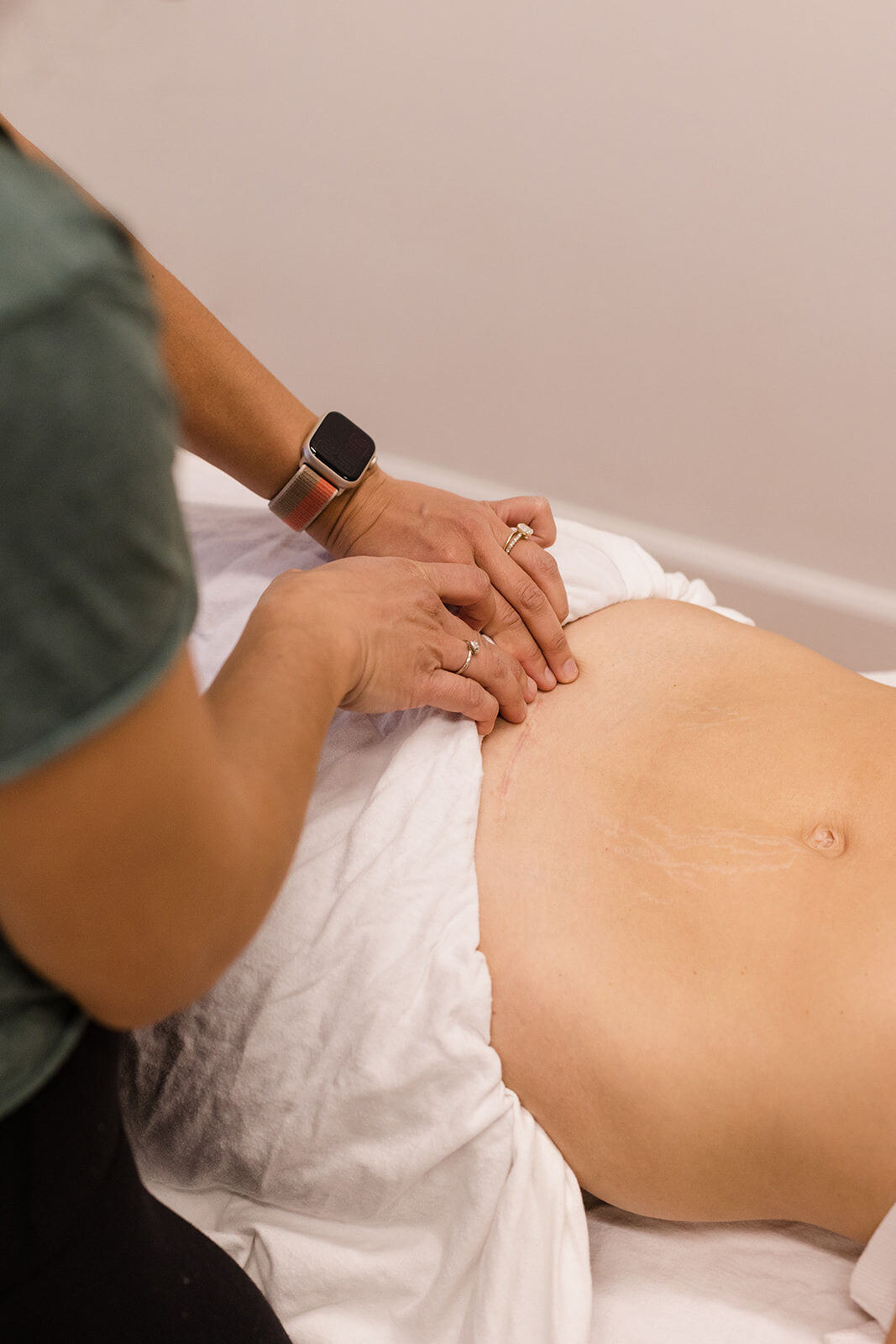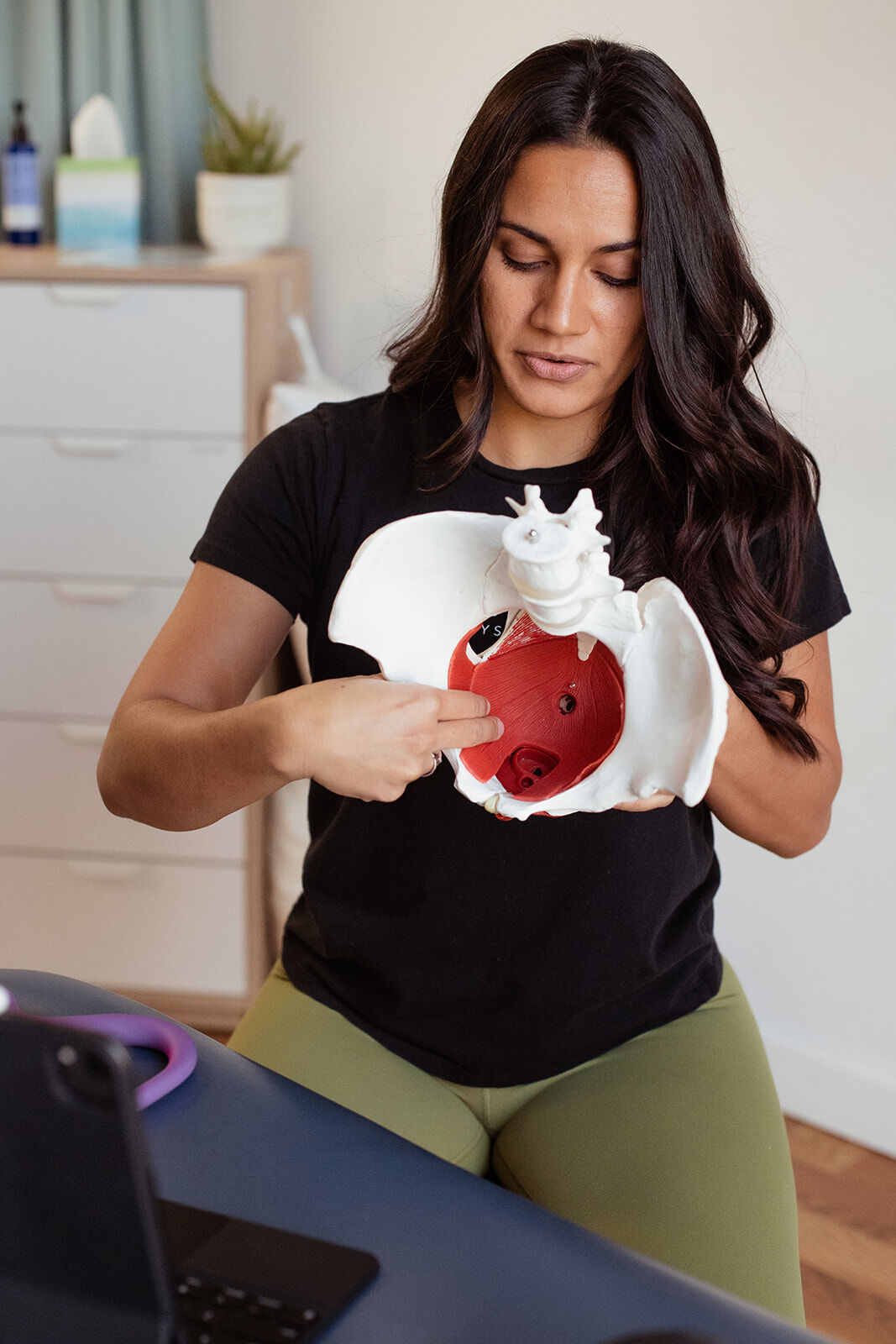
Thrive Physical Therapy, hero
Courtesy of Thrive Physical Therapy
When Tori Dube first got to a pelvic floor physical therapist two months postpartum, her uterus had slipped from its usual position and was bulging into the vagina, a condition known as uterine prolapse. “Partially because I was very early postpartum and partially because I had a long natural birth,” Dube said, adding that she pushed for six hours to deliver her daughter.
She’s not alone. Postpartum pelvic floor injuries are a common problem. However, many postpartum women still don’t pay attention to their pelvic floor, before, during or after delivery.
According to Dube, pelvic floor disorders are normalized in our society. “I have friends now who have toddlers, and they thought it was normal to have incontinence issues and feel weak and never get back their strength, they thought that was a part of childbirth,” she said. “That didn’t resonate with me.”
After Michaela Staniford gave birth to her first child, she suffered from diastasis recti, a separation of the muscles in the abdomen. As a former professional athlete, she said her condition was caused by going back to exercising too early after birth. “I thought I was strong enough to power through but it was a lack of information on my part, and I wasn’t offered that information through any doctors,” she said.
This motivated her work. Now a certified pregnancy and postpartum coach in San Diego, she offers one-on-one postpartum training for women, nonbinary people, and trans men. “Birth is traumatic, recovering from it is going to take rehab, you wouldn’t go through a huge injury and then just walk it off,” said Staniford.

Thrive Physical Therapy, stomach
Courtesy of Thrive Physical Therapy
Julieanne Berg is a physical therapist at Thrive Physical Therapy, a clinic that focuses on pregnant and postpartum people in San Diego. She says the pressure that pregnancy and birth apply on the pelvic floor can be physically damaging. “It’s normal to have changes,” she said. “But they don’t have to be your new normal.”
But not only postpartum people suffer from pelvic floor disorders. “(We see) a large number of women in their 20s who have pain during penetration or after sex,” shared Berg. “And post-menopausal, there can be hormonal changes that can change the way sex feels, the way your pelvic floor muscles are functioning.”
Physical therapist and founder of Thrive Physical Therapy, Lauren Mallari-Snyder, says she believes all women deserve to know about their pelvic floor. “We were never taught about (our bodies) in sex class, all we were taught is that we have a period,” she said.
Some countries are already trying to remedy this situation. The UK, in their latest guidelines to prevent pelvic floor dysfunction recommends that girls between 12 and 17 should be taught pelvic floor exercises in school.
The pelvic floor, or the “pelvic bowl” as Mallari-Snyder believes it should be called, is a group of muscles within the pelvis that supports the organs there, namely sexual organs, bladder, uterus, and anal sphincter. It’s also working alongside the core muscles to give stability. “It has more functions than just pee, poo, and sex,” she pointed out.
“Male and female bodies both have pelvic floors,” Staniford said. “There are ways other than pregnancy and postpartum that the pelvic floor could be put in distress, it could be through weightlifting, acceleration, contact sports, bearing down…”
Therefore, as Mallari-Snyder points out, pelvic floor therapy is not only for pregnant bodies. “It’s really important for men as well,” she added. But it can be difficult for people to access pelvic floor physical therapy because “it costs money, it’s time away from your family, time away from your kids, there’s a lot of guilt,” Staniford said.
Many physical therapy clinics that focus on pelvic floor disorders don’t accept insurance, Staniford added. And even in the ones that do, it’s hard to get the therapies covered. “An initial session (out of pocket) can cost over $100, people struggle to find that amount of cash. It’s simply not made easy,” she said.
For Mallari-Snyder, there aren’t enough providers in San Diego of this specialty to help people. She founded the practice with her husband, Aaron Snyder, to fill this gap.

Thrive Physical Therapy, pelvic
Courtesy of Thrive Physical Therapy
“Once you see a pelvic floor specialist, it opens up this whole world of options,” Berg said. “We prescribe a pelvic wand, vaginal dilators, vaginal trainers, there’s a lot of things that basically no other provider knows about.”
Take urinary incontinence, one of the most prevalent pelvic floor disorders that often goes disregarded, but that can be treated and remedied with pelvic floor physical therapy. Mallari-Snyder said that people assume that getting up from bed to pee is just a fact of life. “Over 65 it’s kind of normal, and during pregnancy, but other than that you shouldn’t have to be woken up to pee in the middle of the night,” she said.
Another reason why pelvic floor disorders are brushed aside, never treated, or misdiagnosed, is deeply ingrained in our society. And this path leads us to, you guessed it, “the patriarchy,” said Mallari-Snyder. “I treat a lot of people who have painful intercourse and a big part of it is because they’ve been shamed their whole life about this area,” she said.
Shame that Dube said she felt when she first contacted Thrive. “(I felt) like my body had failed me in the recovery process,” she said. As of this writing, she is four months postpartum, and feels she has regained her strength and is ready to start high-impact exercise.
PARTNER CONTENT
“I think that if they’re able to—whether they feel like they had any traumatic damage or purely the recovery of a vaginal birth— every woman can benefit from pelvic floor physical therapy after birth,” she said.





















